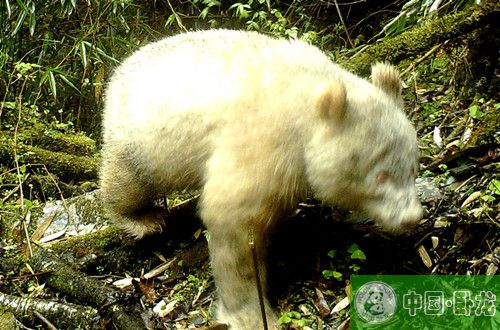This is considered the world’s first documented image of an albino giant panda.
The photograph, which was snapped by infrared motion sensor camera in Sichuan’s Wolong National Nature Reserve in China in mid-April, was only released over the weekend. Officials said the photo is of an albino panda, estimated to be about 1- to 2-years-old.
But its gender is unclear.
“The picture clearly shows the unique morphological characteristics of the panda: the hair is white, the claws are white, and the eyes are red, passing through the lush native deciduous broad-leaved forest,” officials said in a statement.
The panda was in a protected area about 2,000-metres above sea level.
The lack of typical black and white colouring is due to a genetic mutation inherited from the animal’s parents. And, that recessive gene, which causes a lack of melanin, or skin pigment, could be passed down to any offspring.
“In the giant panda population of Wolong, whether the albino mutant gene will be further transmitted will also need to be observed through continuous field monitoring in the protected area,” administrators said.
Wildlife monitoring at the nature reserve is part of a large scale effort to track growth and development of different species.
You are looking at the first-ever photo of a WHITE giant panda in the world. This #panda was spotted by a surveillance camera at a natural reserve in SW China’s Sichuan in April. Scientists believe the color change is a result of albino and the panda is in good health. pic.twitter.com/KWBr4Fl6TD
— People’s Daily, China (@PDChina) May 25, 2019
The World Wide Fund for Nature, WWF, estimates some 1,864 giant pandas living in the wild. That’s up from 1,114 counted in the 1980s.
Still, the giant panda is classified as vulnerable on the Red List compiled by the International Union for Conservation of Nature.
Photo Wolong National Nature Reserve





